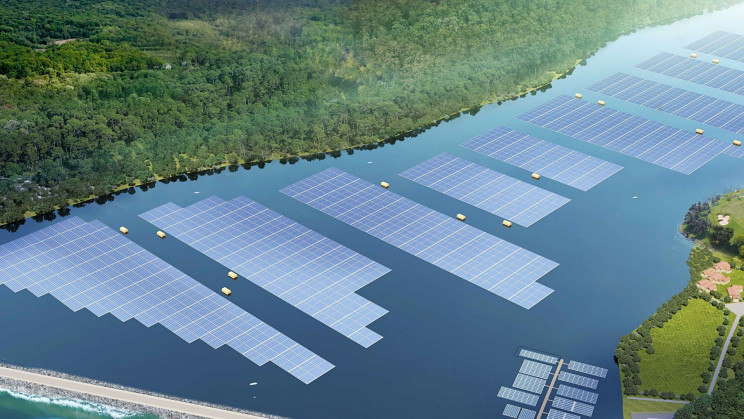Singapore builds floating solar farms, to tackle the climate crisis. The country, devoid of space, anchors on the seabed more than a hundred thousand solar panels.

Thousands of solar panels installed off the coast of Singapore, to help this island city-state fight the global climate crisis.
Although it is one of the smallest countries in the world (Singapore is less than half the size of London), this thriving financial centre is one of the largest carbon emitter per capita in Asia, according to the AFP report.
One of the newly built solar farms stretches off the coast of Singapore in the Johor Strait, which separates Singapore from Malaysia.
13,000 panels are anchored to the bottom of the Johor Strait and are able to produce five megawatts of electricity, which is enough to power almost 1,500 apartments all year round.
The panels were built in China, the world's largest solar panel manufacturer, and attached to the seabed by means of chains and concrete blocks.
“The sea is a new frontier for solar installations” – told AFP Shawn Tan, Vice President of. engineering at Sunseap Group in Singapore, who completed the project in January.
“We hope, that this will set a precedent, to have more floating projects at sea in Singapore and neighbouring countries”.
Another project still under development is much larger – after graduating later this year, solar farm with power 122 000 panels at the Tengeh reservoir will be one of the largest in Southeast Asia.
Project, by Sembcorp and the National Water Agency Public Utilities Board, will reportedly generate enough energy, to meet the energy needs of Singapore's water treatment plants.
Singapore faces renewable energy challenges
Despite its position as a financial centre,, Singapore faces the difficult task of deploying renewable energy. There are not enough fast rivers in this small country, to get water energy, and the wind in the region is not strong enough all year round, to power turbines.
Instead, the country's government turned to solar power. Nevertheless,, due to lack of land for solar farms, resort to installing panels at sea and water bodies – Initiative, which could potentially hinder the development of the domestic shipping industry.
“When roofs and available land are exhausted, which are very limited, another big potential is our water area” – told AFP agency Jen Tan, Senior Vice President and Head of Solar Energy in Southeast Asia at Sembcorp Industries Conglomerate.
Last month, Singapore presented a wide-ranging “green plan”, which included measures to quadruple the use of solar energy to about two percent of the national energy demand for 2025 year, and up to three percent to 2030 year – which is enough to fund the 350 000 households per year.
However, critics say, that the country needs to do more, to help fight climate change – Climate Action Tracker, which tracks governments' commitments, classifies Singapore's objectives as “highly inadequate” compared to other countries.
Singapore is, after all, threatened by rising sea levels due to its proximity to the ocean.
The country's position as a leading financial centre and early implementer of advanced technologies also means, that its climate initiatives continue to set a precedent for many countries around the world, when it comes to combating the climate crisis.










